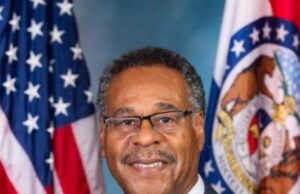Nine new Promise Zones join 13 others to expand economic opportunity in distressed areas
WASHINGTON, D.C. – (RealEstateRama) — The Obama Administration today named the final nine Promise Zones across the country – high poverty areas in select urban, rural and tribal communities. Through the Promise Zone Initiative, the Federal government will work strategically with local leaders to boost economic activity and job growth, improve educational opportunities, reduce crime and leverage private investment to improve the quality of life in these vulnerable areas.
The following communities now include Promise Zones:
- Atlanta, Georgia
- Nashville, Tennessee
- Evansville, Indiana
- South Los Angeles, California
- San Diego, California
- Southwest Florida Regional Planning Commission
- Spokane Tribe of Indians, Washington
- Turtle Mountain Band of Chippewa Indians, Rolette County, North Dakota
- Roosevelt Roads, Puerto Rico
U.S. Department of Housing and Urban Development (HUD) Secretary Julián Castro traveled to Atlanta to make the announcement while U.S. Department of Agriculture (USDA) Secretary Tom Vilsack announced the new Promise Zone in Roosevelt Roads, Puerto Rico on Friday. In addition, a host of other senior Administration officials made individual announcements in the other Promise Zones.
“Promise Zones bring the power of partnership to a whole new level as we seek to bring opportunity to neighborhoods long locked out of their area’s prosperity,” said HUD Secretary Castro. “As a former mayor from a city that includes a Promise Zone, I know just how powerful these collaborations are when it comes to building stronger, economically vital neighborhoods.”
“Rural and Tribal areas face unique challenges and we are ready to take on those challenges with creative solutions that strengthen communities,” said USDA Secretary Vilsack. “The Promise Zone initiative delivers proven results by encouraging collaboration between the federal government, community organizations, the private sector and state and local governments. Through these partnerships, we are supporting jobs and economic opportunities that enable rural areas to thrive.”
Background on Promise Zones:
Today’s newly designated Promise Zones join 13 others that President Obama designated in 2014 and 2015. These Promise Zones include targeted neighborhoods in the following communities:
- San Antonio, Texas
- Los Angeles, California
- Philadelphia, Pennsylvania
- Southeastern Kentucky Highlands
- the Choctaw Nation of Oklahoma
- Camden, New Jersey
- Hartford, Connecticut
- Indianapolis, Indiana
- Minneapolis, Minnesota
- Sacramento, California
- St. Louis/St. Louis County, Missouri
- Pine Ridge Indian Reservation of the Oglala Sioux Tribe, South Dakota
- The South Carolina Low Country
Work is well underway in these communities and demonstrating results. For example:
- In Indianapolis, the IndyEast Promise Zone has already secured nearly $10 million in federal grants across seven different agencies. This support has helped create 110 jobs, provide life-changing workforce training to hundreds of formerly incarcerated individuals, and develop a new energy efficient apartment building for low-income senior citizens.
- In North Minneapolis, USDA awarded Appetite for Change (a locally led organization) a Community Food Project grant to help continue and expand programs that are changing the way food is produced, marketed, distributed and consumed in North Minneapolis. This project has served over 1,000 community members, with 24 youth employed and trained and 15 jobs created, aiding 53 community-owned food business start-ups.
- In San Antonio, the Promise Zone to Work Initiative was launched and has since provided free job training certifications in nursing, construction, manufacturing, information technology, and heavy equipment for 106 residents. This effort is contributing to an overall decline in the unemployment rate; over the last four years, unemployment in the Promise Zone declined from 15 percent to 11 percent.
- In Southeastern KY, a new educational framework and support from AmeriCorps VISTA members helped lift the graduation rate at Leslie County High School from 67 to 98 percent.
- Choctaw Nation: secured $21 million in New Markets Tax Credits to build an environmentally sustainable steel manufacturing facility in the Promise Zone. The mill will support approximately 300 new jobs in the region.
Additional information on rural and Tribal Promise Zones is available at www.usda.gov/promisezones.
Today’s Promise Zone communities were selected from 82 applications from 38 states and Puerto Rico. Each urban, rural, and tribal Promise Zone applicant was asked to put together a clear description of how the Promise Zone designation would accelerate and strengthen the community’s own efforts at comprehensive community revitalization. Each Promise Zone will be coordinated by a lead community based organization in partnership with the Obama Administration. HUD will be the federal lead for the five urban designees, while USDA will serve as the lead federal partner to the tribal and rural Promise Zones.
All Promise Zones will receive priority access to federal investments that further their strategic plans, federal staff on the ground to help them implement their goals, and five full-time AmeriCorps VISTA members to recruit and manage volunteers and strengthen the capacity of the Promise Zone initiatives.
To receive updates, please subscribe to the Promise Zones mailing list.
###
HUD’s mission is to create strong, sustainable, inclusive communities and quality affordable homes for all.
More information about HUD and its programs is available on the Internet
at www.hud.gov and http://espanol.hud.gov.
You can also connect with HUD on social media and follow Secretary Castro on
Twitter and Facebook or sign up for news alerts on HUD’s Email List.
USDA provides leadership on food, agriculture, natural resources, rural development, nutrition, and related issues based on public policy, the best available science, and effective management. Find out more atwww.usda.gov.
Heather Fluit
(202) 708-0685
USDA Office of Communications
(202) 720-4623













